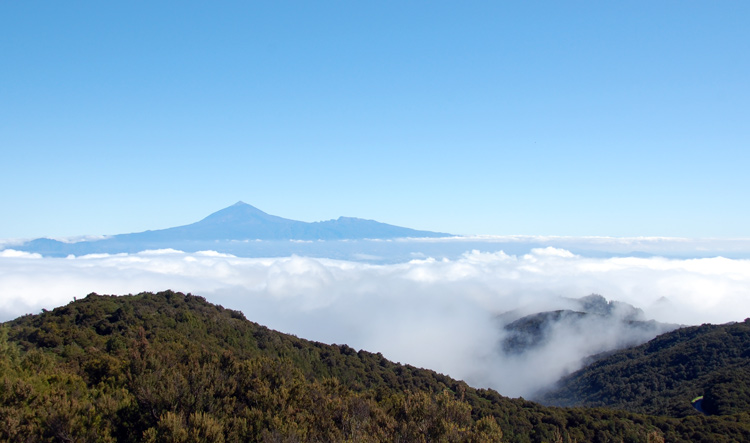
Next day we caught the bus and were dropped off at the start of a short hike to the highest point on the island, Alto de Garajonay, at 1460m altitude. On a clear day you can see back to Tenerife and also the nearby islands of La Palma and El Hierro - and, luckily for us, it was a beautifully clear and sunny day allowing Mt. Teide on Tenerife to rise clearly above the cloud layer:

After admiring the breathtaking views we headed on down a track to take us past the bus stop and into a gradual descent through the Laurisilva forest to a town called Hermigua. At this point the walking was gentle and the going quick with wide, flat paths although this was to change fairly dramatically later. The guide book tells me that the predominant species of the forests are Erica arborea (tree heather), Myrica faya (bog myrtle), Ilex canariensis (holly), Laurus azorica (laurel), Persea indica (avacado), Picconia excelsa (Palo Blanco) - most of which I was unfamiliar with though other species are locally common - we saw a lot of Arbutus canariensis, for example.
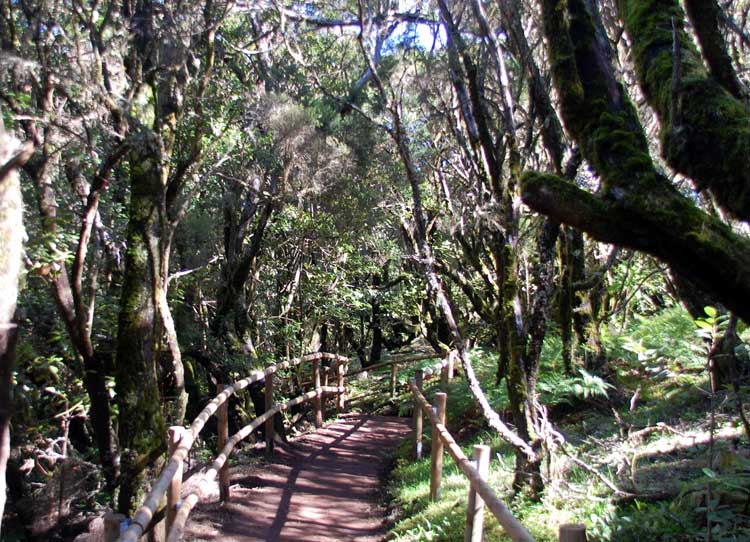
As you would expect in such shaded, damp and humid conditions, ferns where everywhere. Taking pictures in shade remains resolutely beyond my abilities so sadly most of the images are now in the bin. Here are some of the better attempts from the forest - below Polypodium macaronesicum.
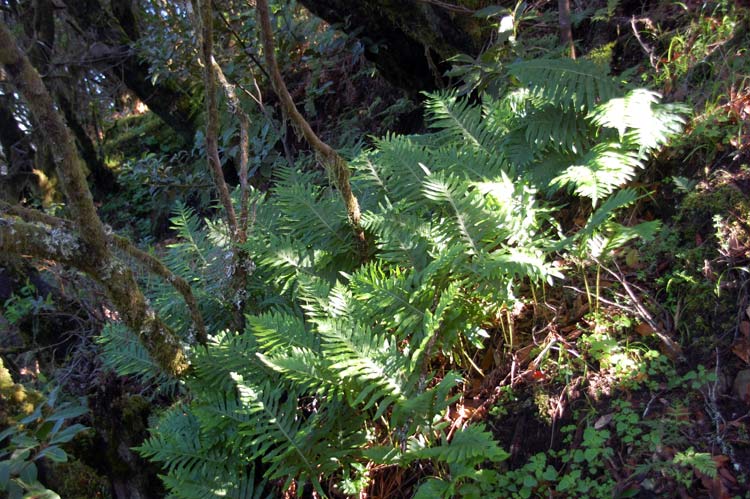
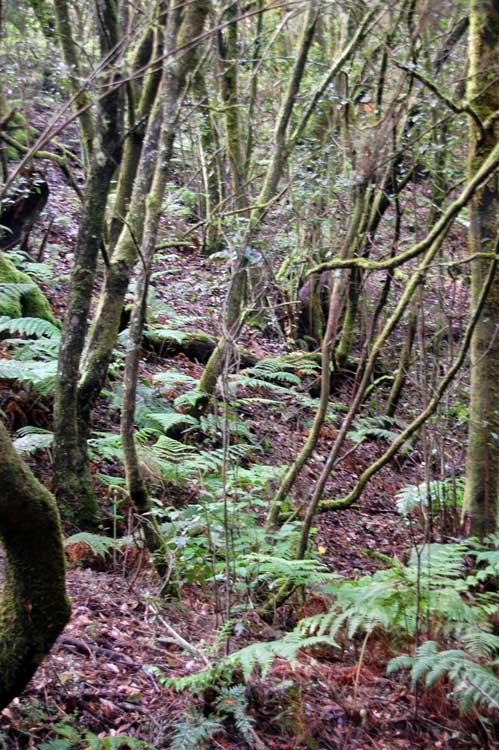
Below two large ferns, one of which I was able to identify as Pteris incompleta, which looked like a slender version of Woodwardia radicans (which we saw in some quantity later)
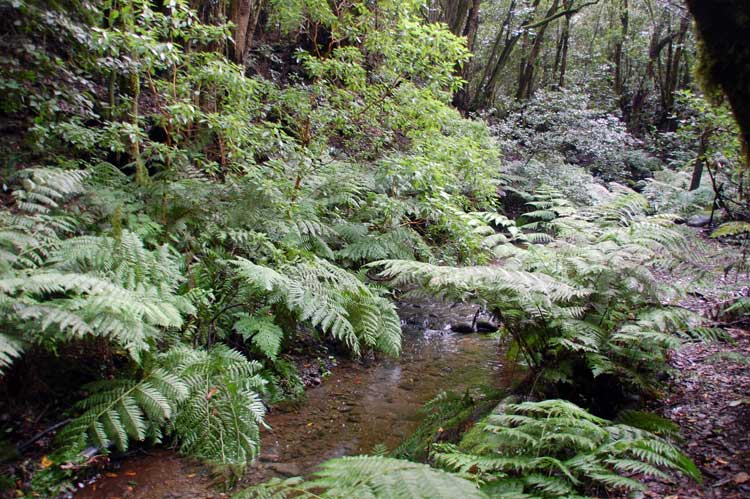
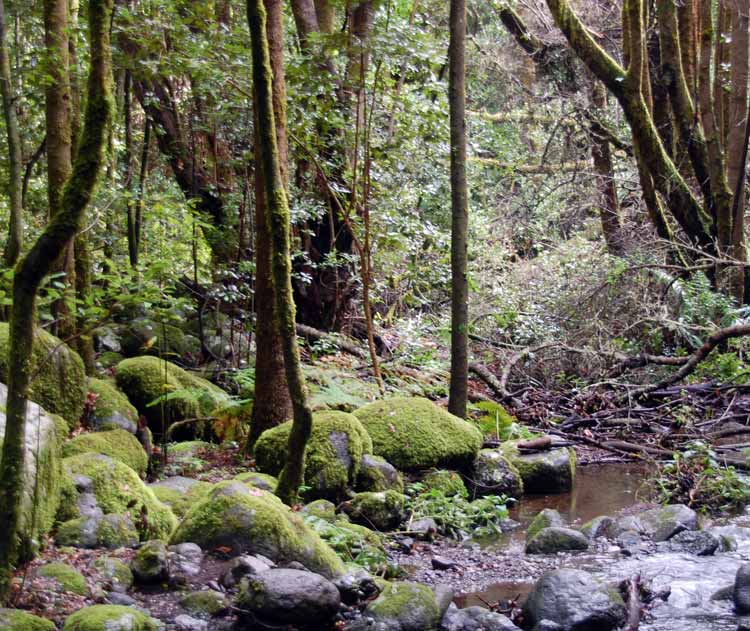
Whether deep in the shade of moist forests or on arid exposed slopes Sonchus species abound in the Canaries generally and in Gomera and Tenerife especially. They seem irritatingly similar to my eyes - this was extremely common throughout the forest and, according to the book, is either S. hierrensis or S. ortunoi. Possibly both.
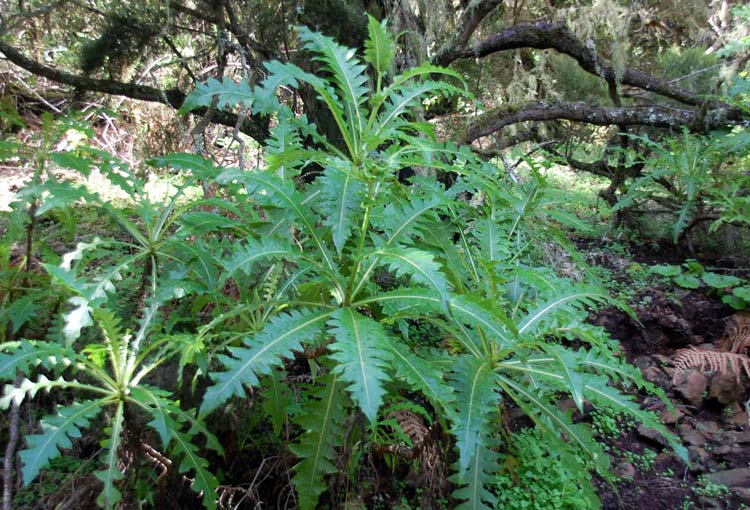
We hiked through the woods for a couple of hours, dropping altitude and wandering through the cloud forest zone until reaching our lunch stop just as the weather turned - light mist changed to grey drizzle with limited visibility. After a nice lunch at a small restaurant in El Cedro (grilled pork for me, goat stew for Neil) we carried on to the next stage. I suffer terribly with vertigo and had I known in advance it would involve a climb down an almost sheer rock face on a slippery stone path hacked out of the side of the cliff I would probably have abandoned the walk. I guess the only good thing about the weather was that I couldn't see the drop immediately at my side! Plus there were plenty of interesting plants to look at by way of a distraction. After about 300m it became easier and emerging from under the cloud layer we were treated to some spectacular views:
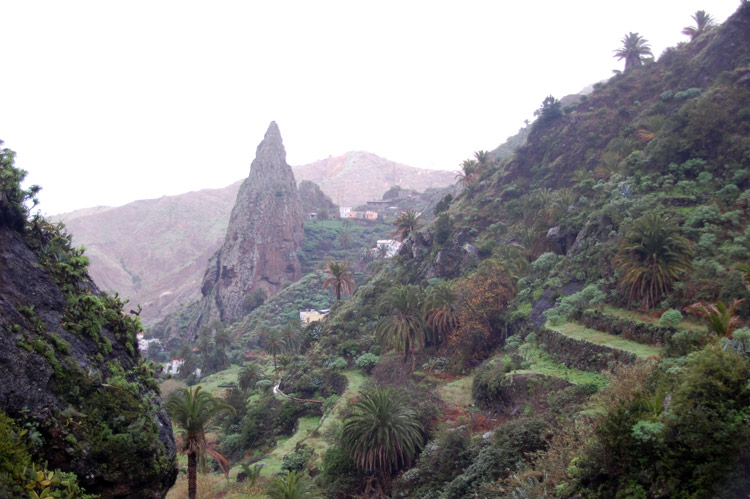
We were in the steep sided lush valley that descended eventually down to Hermigua with the terraced slopes studded with wild Phoenix canariensis.

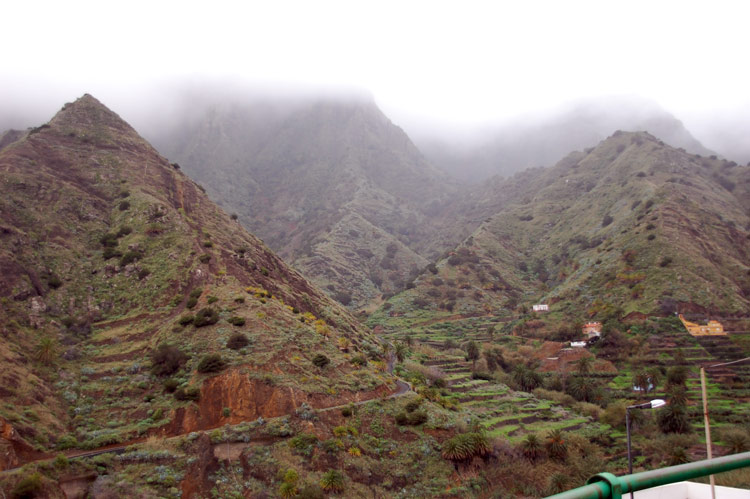
Below - Aeonium castello-paivae, a relatively common species on Gomera.
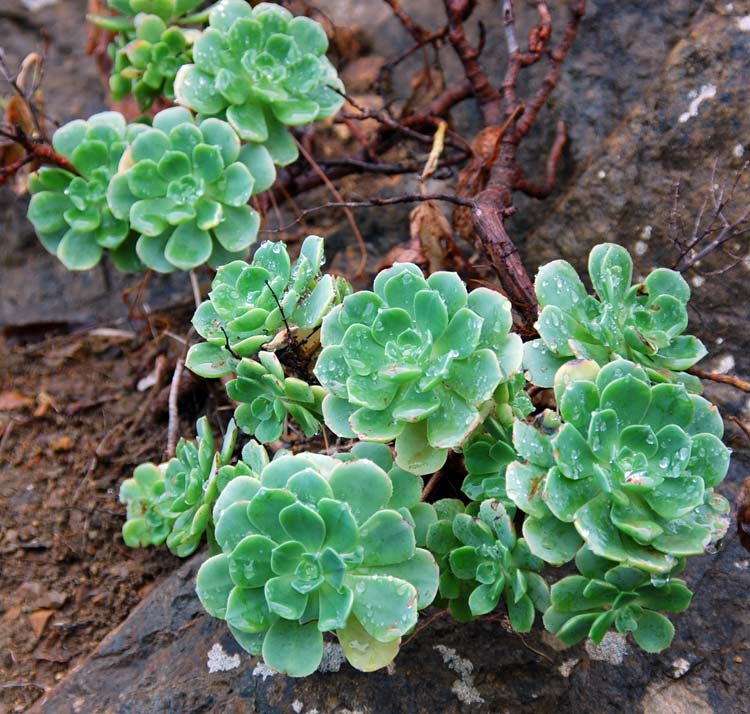
The weather had now improved a little but by the time we reached Hermigua the afternoon had gone as had the last bus back to San Sebastián so we flagged down a relatively inexpensive taxi to take us back.